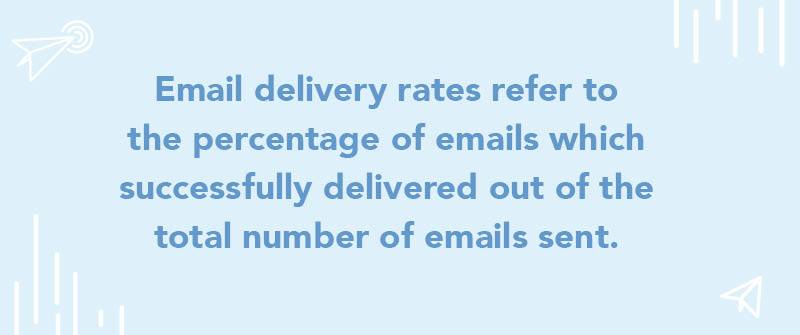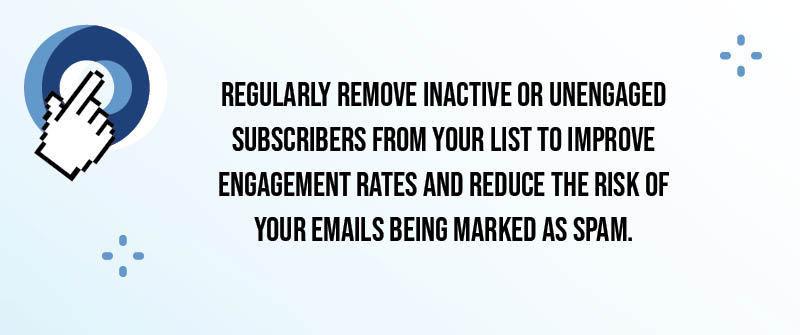Who doesn’t love the smell of fresh new IP addresses? Well, anyone charged with warming IP addresses for...
Email delivery is a crucial aspect of any successful email marketing campaign. As an email marketer, it is essential to understand what is emailing delivery and how to maintain high email delivery rates to ensure that your messages are reaching your subscribers’ inboxes. In this article, we will explore the various factors that can affect email delivery and discuss strategies to improve it. We will also cover the importance of avoiding spam filters and how to monitor and evaluate your email delivery performance.
Understanding Email Delivery Rates
Defining Email Delivery Rates
Email delivery rates refer to the percentage of emails which successfully delivered out of the total number of emails sent. It is a metric that indicates how well your emails are getting through to your subscribers’ inboxes. A high email delivery rate signifies that your messages are reaching their intended recipients, which is crucial for the success of your email marketing campaigns.
When it comes to knowing how to measure email deliverability it’s important to distinguish between delivery rate and deliverability rate. While delivery rate just measures the percentage of emails that were accepted by the recipient’s mail server, deliverability rate takes into account emails that were not only delivered but also landed in the recipient’s inbox. Achieving a high deliverability rate is the ultimate goal for email marketers, as it ensures that their messages are not only reaching the recipients but also being seen and engaged with.

Importance of High Email Delivery Rates
Understanding what is the average email delivery rate is essential for several reasons. Firstly, it ensures that your messages are reaching your subscribers and that your efforts are not going to waste. Secondly, it improves your sender reputation, which plays a significant role in email deliverability. ISPs and email service providers (ESPs) closely monitor sender reputation to determine whether to deliver emails to the inbox spam folder or block them altogether. Lastly, high email delivery rates contribute to better subscriber engagement and, ultimately, higher conversions.
Furthermore, high email delivery rates can also positively impact your overall marketing strategy. By consistently reaching your target audience’s inboxes, you increase brand visibility and recognition. This, in turn, can lead to improved brand loyalty and customer retention. Additionally, a strong email delivery rate can help you gather valuable data and insights into your audience’s preferences and behaviors, enabling you to tailor your future campaigns for better results.
Factors Affecting Email Delivery
Email Content and Structure
The content and structure of your emails can significantly impact your email delivery rates. Avoid using spam trigger words and phrases that might cause your emails to be flagged as spam. Additionally, ensure that your emails are well-formatted and free from errors, as poorly formatted emails are more likely to end up in the spam folder.
When crafting your email content, it’s important to strike a balance between text and images. Emails that are too image-heavy may trigger spam filters, as some ISPs consider them to be characteristic of spam emails. Including alt text for your images can also improve accessibility for recipients who have images disabled in their email clients.

Sender Reputation
Your sender reputation is a major factor in determining whether your emails land in the inbox or spam folder. ISPs and ESPs assess your sender reputation based on various factors, such as the quality of your email list, previous email delivery performance, engagement rates, and the number of spam complaints. It is crucial to build and maintain a positive sender reputation by following best practices and providing value to your subscribers.
In addition to maintaining a positive sender reputation, implementing authentication protocols like SPF, DKIM, and DMARC can help verify your identity as a sender and improve your email deliverability. These protocols are essential as they add an extra layer of security and credibility to your emails, signaling to ISPs that you are a legitimate sender.
Subscriber Engagement
The level of engagement from your subscribers also affects email delivery rates. ISPs consider factors like open rates, click-through rates, and email replies when determining whether to deliver emails to the inbox. Encourage subscriber engagement by sending relevant and personalized content, using appealing subject lines, and optimizing your email send frequency.
Personalization is key to boosting subscriber engagement. By segmenting your email list based on demographics, behavior, or preferences, you can tailor your content to better resonate with different subscriber groups. A/B testing different elements of your emails, such as subject lines, CTAs, and sender names, can also help you optimize for higher engagement rates.
Strategies to Improve Email Delivery
Building a Quality Email List
A quality email list plays a vital role in ensuring high email delivery rates. Focus on growing your email list organically by implementing opt-in strategies and avoiding purchased or rented email lists. Regularly clean your email list by removing inactive subscribers and managing bounced emails to maintain a healthy list that consists of engaged recipients.
Furthermore, when building your email list, consider segmenting your subscribers based on their interests and preferences. By sending targeted and personalized content to specific segments of your list, you can increase engagement and ultimately improve your email delivery rates. Implementing a double opt-in process can also help ensure that your subscribers are genuinely interested in receiving your emails, leading to higher open and click-through rates.
Implementing Email Authentication
Email authentication is a set of protocols that verify the legitimacy of your emails and help prevent spoofing and phishing attempts. Implementing authentication methods like SPF (Sender Policy Framework), DKIM (DomainKeys Identified Mail), and DMARC (Domain-based Message Authentication, Reporting, and Conformance) adds an additional layer of security to your emails and enhances your sender reputation.
Moreover, regularly monitor your email authentication records to identify and address any issues promptly. Conducting regular checks and audits of your SPF and DKIM configurations can help prevent deliverability issues and ensure that your emails are properly authenticated. By staying proactive in maintaining your email authentication protocols, you can build trust with email service providers and improve the overall deliverability of your emails.
Regularly Cleaning Your Email List
Cleaning your email list is crucial for maintaining high email delivery rates. Regularly remove inactive or unengaged subscribers from your list to improve engagement rates and reduce the risk of your emails being marked as spam. Additionally, manage bounced emails and suppress email addresses with delivery issues to ensure that your list consists of valid and deliverable addresses.
Furthermore, consider implementing re-engagement campaigns for subscribers who have become disengaged over time. By offering special promotions or valuable content to rekindle their interest, you can potentially win back inactive subscribers and improve the overall health of your email list. Remember, a clean and engaged email list is essential for achieving successful email delivery and maximizing the impact of your email marketing efforts.

Avoiding Spam Filters
Understanding Spam Filters
Spam filters are algorithms used by Internet Service Providers (ISPs) and Email Service Providers (ESPs) to identify and filter out unwanted or malicious emails. These filters analyze various factors, including email content, sender reputation, and subscriber engagement, to determine whether an email should be delivered to the inbox or flagged as spam. By employing sophisticated pattern recognition and machine learning techniques, spam filters continuously adapt to new spamming tactics, making it crucial for email senders to stay informed about the latest trends in email filtering technology.
Moreover, spam filters not only protect users from unsolicited emails but also play a vital role in safeguarding against phishing attacks, malware distribution, and other cyber threats. Understanding how spam filters work can help email marketers and legitimate senders navigate the complex email deliverability landscape and maintain a positive sender reputation.
Tips to Avoid Landing in Spam
To avoid landing in the spam folder and maximize email deliverability, consider the following tips:
- Use a reputable email service provider that adheres to industry best practices and actively monitors deliverability metrics.
- Put in place all of the email authentication protocols (SPF, DKIM, DMARC) for your sending domain.
- Avoid using excessive capitalization, excessive punctuation, or misleading subject lines that may trigger spam filters.
- Personalize your emails by segmenting your subscriber list and tailoring content to specific audience interests and preferences.
- Include a clear and conspicuous unsubscribe link to give recipients an easy way to opt-out and demonstrate respect for their preferences.
- Regularly test your emails using spam checkers and authentication tools before sending them to identify any potential deliverability issues and ensure compliance with email regulations.
Monitoring and Evaluating Email Delivery Performance
Tools for Tracking Email Delivery
Various tools are available to track and monitor your email delivery performance. These tools provide insights into crucial metrics such as delivery rates, bounce rates, open rates, and click-through rates. By utilizing these tools, you can identify any issues affecting your email delivery and take proactive measures to address them.
Key Metrics to Monitor
When monitoring your email delivery performance, pay attention to the following key metrics:
- Delivery rate: The percentage of successfully delivered emails.
- Bounce rate: The percentage of emails that were not delivered due to invalid or undeliverable addresses.
- Open rate: The percentage of recipients who opened your emails.
- Click-through rate: The percentage of recipients who clicked on links within your emails.
- Spam complaint rate: The percentage of recipients who marked your emails as spam.
In conclusion, maintaining high email delivery rates is vital for the success of your email marketing campaigns. By understanding the various factors that affect email delivery and implementing effective strategies, you can improve your email deliverability and ensure that your messages reach your subscribers’ inboxes. Additionally, avoiding spam filters and monitoring your email delivery can help you stay ahead of any issues and continuously optimize your email marketing efforts.. Contact Audience Point today to maximum your email marketing performance.



